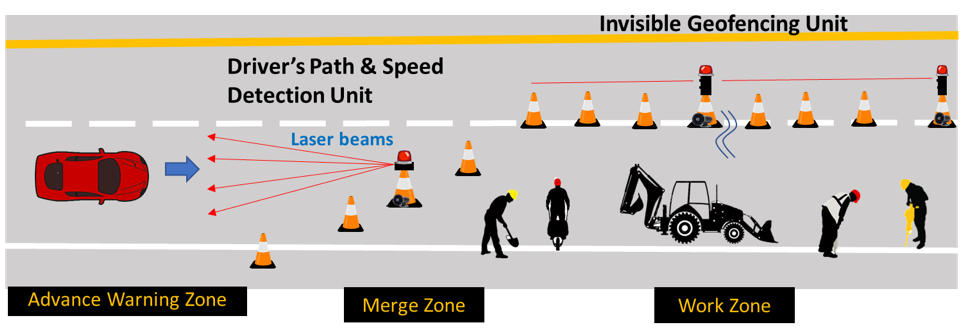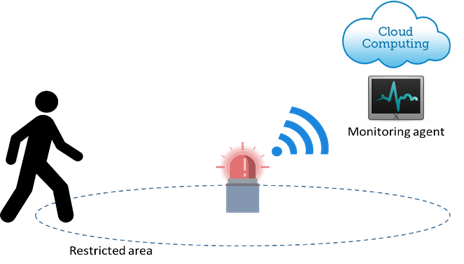This simple, effective, and inexpensive “smart” roadway safety system addresses the inadequacies of current highway construction zone safety measures, which consist primarily of passive devices such as cones, barrels, drums, and barricades that visually alert drivers to work zone borders. When mounted onto standard safety barriers, Georgia Tech’s innovation creates a geofenced detection perimeter that audibly and visually warns workers of intrusions into protected workspaces. Wireless sensors on the safety barriers communicate with each other, sending intrusion data in real time to provide advance warnings for workers in the form of flashing lights and loud sirens. The system also sends intrusion data via Wi-Fi® technology to a cloud-based or remote server to alert authorities and enable analysis and identification of areas that are more susceptible to intrusion or breaches. The system’s combination of active and passive methods provides significant enhancement over existing impact-activated devices and passive safety measures.
- Enhanced safety: Rather than relying on impact-activated devices, the system issues real-time warnings as soon as the perimeter is breached, providing more time for workers to react and get to safety.
- Portable and changeable: The system can be easily moved or adjusted to accommodate changes to the work zone during the day.
- Smart analytics: Analysis of intrusion data helps pinpoint areas within the work zone that are more susceptible to breaches, enabling more effective and efficient security.
- Reduced costs: Intrusion analytics provide insights for adding reinforcements to only the sections experiencing frequent breaches rather than the entire boundary area, saving costs and time.
- Expandable: Designed to be connected to other systems, it can create a short-range, low-power mesh network to extend warnings across multiple work zones.
- Highway construction zones
- Residential and commercial construction sites
- Other activities occurring in close proximity to roads and highways
Protecting workers performing construction and maintenance activities in close proximity to travel zones like roads and highways is challenging. Safety measures put in place to protect workers and reduce potential damage to equipment are often inconvenient both to the workers and the general public in the vicinity. As a result, people sometimes ignore warnings and cross barriers without realizing they could be putting themselves and others at risk.
Currently, there are few active safety systems for controlling and monitoring the boundaries of work zones. Impact-activated warning devices are available but provide little to no time for workers to react and move to safety. With almost 1,000 work zone fatalities each year, the need for a better safety warning system for roadway work zones is apparent (source).
How It Works
Mounted on standard passive safety barriers, the system contains a controller, proximity sensors, warning devices, and batteries. Sonar-based sensors are used for securing smaller work areas and can be spaced up to 20 feet apart. Each sonar sensor can detect a 50-degree range, with multiple sensors creating up to 180 degrees of coverage. Lidar-based sensors are used for long distances (such as long highway work zones), use either single or multiple laser beams, and can be placed up to 328 feet (100 meters) apart.
The sensors communicate with each other via Zigbee™ protocol to relay warnings. They send intrusion data to a cloud-based or remote server via Wi-Fi. When any sensor detects a breach in the protected area, all cones emit flashes and audible alarms to alert the intruder and the workers, while also sending intrusion information to a cloud server for monitoring.
Wi-Fi is a registered trademark of the Wi-Fi Alliance.
Zigbee is a trademark of the Zigbee Alliance.

Lidar-based system for longer work zones

Sonar-based system for smaller work areas (e.g., lifting equipment, manhole inspection).
